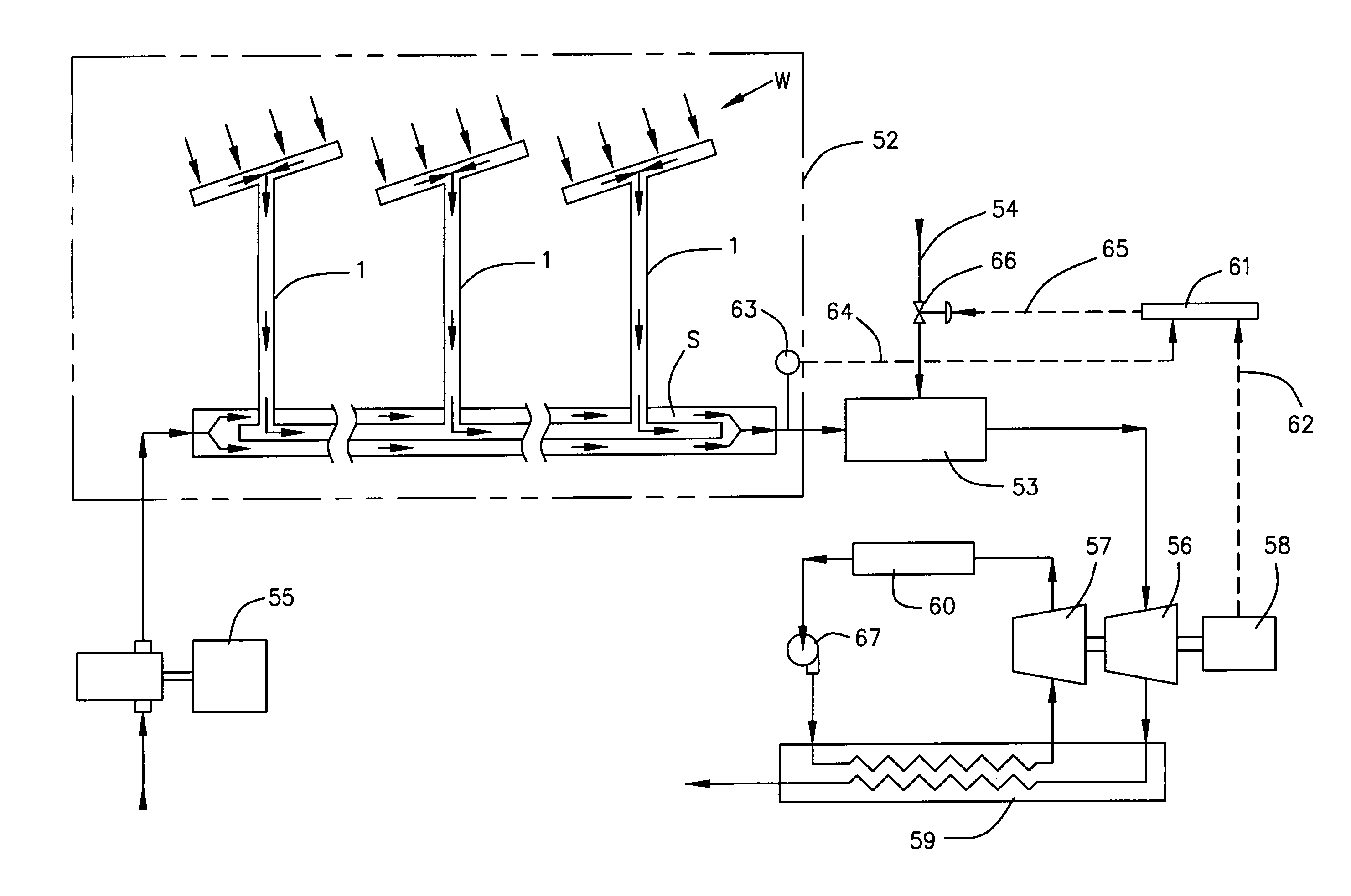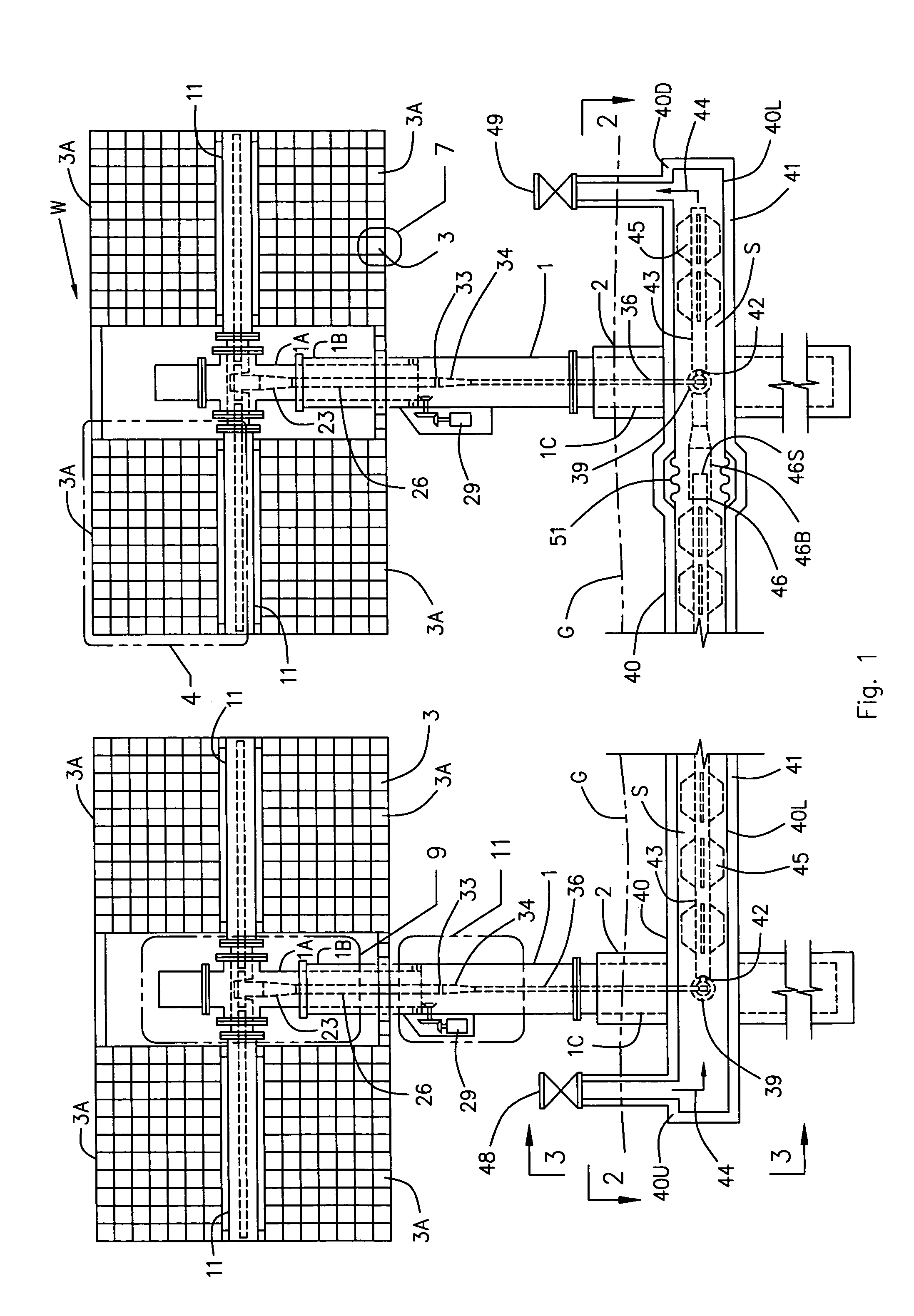Solar blackbody waveguide for efficient and effective conversion of solar flux to heat energy
a solar flux and blackbody technology, applied in the direction of heat collector mounting/support, hybrid energy generation, lighting and heating apparatus, etc., can solve the problems of low energy-density of ambient sunlight, large geometry of concentrator assemblies, and large heat-producing capacity of megawatts (mw)
- Summary
- Abstract
- Description
- Claims
- Application Information
AI Technical Summary
Problems solved by technology
Method used
Image
Examples
Embodiment Construction
[0039]Referring now to the drawings and initially to FIG. 1, there is illustrated a solar blackbody waveguide W for efficient and effective conversion of solar flux to heat energy that is constructed in accordance with a preferred embodiment of the present invention. As illustrated, the invention W consists of one or more interconnected solar towers 1 to efficiently and effectively capture and concentrate energy in the form of solar flux and to efficiently convert this solar energy into useable forms of heat energy. This embodiment of the invention W is an improvement to simple-cycle and combined-cycle gas turbine heat engines by preheating the air (thermal working fluid) used prior to the combustion chamber of the gas turbine, as will be more fully described hereafter in association with FIG. 17. However, the invention is not limited to this application and is applicable to numerous other heating cycles using different thermal working fluids or heat transfer fluids other than air. ...
PUM
 Login to View More
Login to View More Abstract
Description
Claims
Application Information
 Login to View More
Login to View More - R&D
- Intellectual Property
- Life Sciences
- Materials
- Tech Scout
- Unparalleled Data Quality
- Higher Quality Content
- 60% Fewer Hallucinations
Browse by: Latest US Patents, China's latest patents, Technical Efficacy Thesaurus, Application Domain, Technology Topic, Popular Technical Reports.
© 2025 PatSnap. All rights reserved.Legal|Privacy policy|Modern Slavery Act Transparency Statement|Sitemap|About US| Contact US: help@patsnap.com



